STORM FIONN - ZERO HOUR
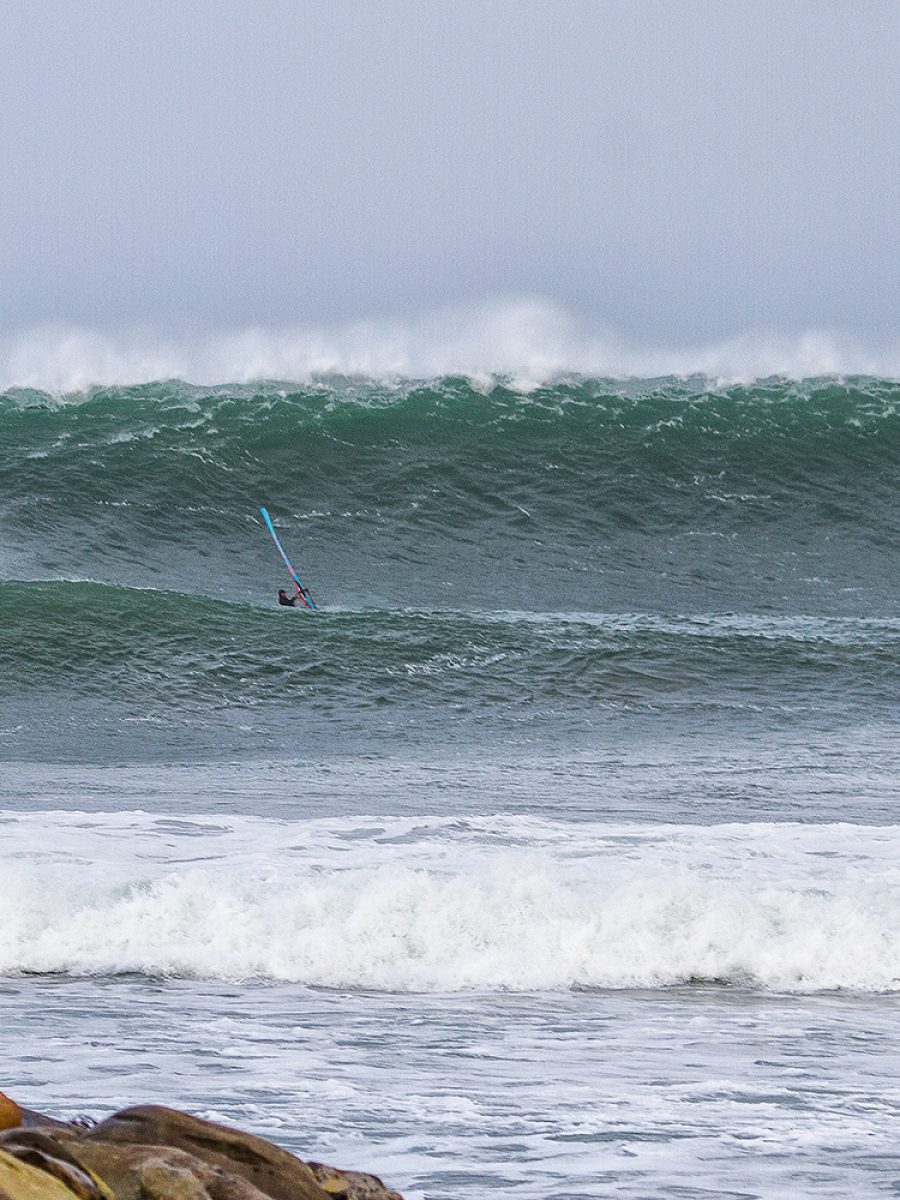
Freezing temperatures, icy winds, snow filled roads and one of the biggest swells of the winter season – Storm Fionn packed a hefty punch. As it roared into Europe, the Mullen brothers teamed up on Ireland’s western shores to meet it. Finn Mullen tells us more.
Words Finn Mullen // Photos Tam Mullen
This feature originally appeared in the April 2018 issue of Windsurf Magazine
Zero degrees Celsius – it’s not the temperature I relish windsurfing in but with my van’s dashboard having displayed it solidly for the last hour, it was a reality I would have to accept and had come prepared for. With every possible layer of clothing I could muster and a few extra for moral support, I’d rigged a 4.7 sail and 105 litre board in a lull in the frequent showers. I was just about to put my wetsuit on when the skies blackened and the mother of all hail storms machine gunned the side of the van as I ran for cover on the leeward side. Maybe this wasn’t such a good idea! I retreated to inside the van and watched helplessly as my kit braved the onslaught of 50 knot gusts, hoping that the swirling maelstrom of weather outside wouldn’t pick it up and deposit it in a far away county. As the squall passed I stepped outside to clear the hail off my sail; clear skies to the west meant we had a window before the next squall, it was now or never.
“ The swell period forecast for today was in the high teens and the mast high plus sets booming through every ten minutes confirmed it. ”
COLD CALL
What I’ve learnt over the years with winter storms like these is that when the air temperature is cold, less than 6° Celsius, they rarely bring good winds from the Atlantic in Ireland. Unstable air = unstable winds. I’d chose a 4.7 because although every forecast was calling for gales, the wind speed I was observing between the squalls was anything but. This system had brought record low temperatures and huge snowfalls to the east coast of America. Named winter storm ‘Grayson’ there, it was described as a “bomb cyclone colder than Mars”. It wasn’t that extreme in Ireland but the cold was definitely reducing the strength of the wind. Snow however was in abundance and the drive to even get to the beach was a mission. I had hugged the coast road where the sea air had moderated the snowfalls somewhat, but even at that I’d passed several cars that had slid off the road. I have a 4×4 with winter tyres and carry tow straps, snow shovels and traction ramps as well as plenty of warm drinks, clothing and food just in case. It can seem overkill but windsurfing on the Atlantic coasts of Ireland and the UK doesn’t always take place in areas with high levels of infrastructure and it’s best to be prepared for the worst. As I look around, the local houses are all entrenched with mounds of sand bags, ready for just that as coastal flooding was predicted for the evening. Timo and Tam pull into the car park later than expected having been stuck further inland where the snow had reduced progress to walking pace at times even in a 4×4. The squall I had sat out in my van had actually torn one of their windscreen wipers clean off. Timo was keen to get straight out as not only could he see we were in a break in the worst of the weather but he also had done the maths and worked out with more snow forecast for later on, he would have to leave even earlier to have any chance of making his return flight accounting for a safe driving speed given the expected road conditions.
SAFETY FIRST
Timo also opted for that great all-rounder of a sail size, 4.7, and his biggest wave board. Our tactics were safety orientated, we would hug the shore, never venturing too far out to sea and at the first sign of any squall approaching could return to land well before it hit. It was a variable force 5, the 4.7 sails would allow us to ride out the lulls but weather the gusts. We wouldn’t normally use such small sails on our relatively large wave boards but today wasn’t normal by any means. Not only was the wind dropping away to virtually nothing at times but its direction was ever changing too. The swell period forecast for today was in the high teens and the mast high plus sets booming through every ten minutes confirmed it. The size of the swell meant there was a lot of water movement and all in all having a bigger board that could cut through the current and ensure we could make it back to shore whatever the wind strength or direction was the prudent choice.
So much is made of how these ‘bigger’ wave boards open up light wind wave sailing and allow us to use smaller sails but as I see it their real strength is just how much safer they have made wave sailing, as anyone who sailed through the decades of ‘sinker’ wave boards will be able to attest! We backed this up with a safety plan with our brother Tam who was taking shots and equipped ourselves with an array of lights, whistles, spare lines and tow ropes, just in case!
ALL AT SEA
Timo was first out as I realized I’d left my uphaul off my boom while double checking my gear. This definitely seemed like the sort of day you’d want it at times so I hung back to fix one up. Watching Timo navigate the tricky channel it was clear it was a lot bigger than it looked watching from the safety of the car park. I was glad I was wearing a flotation vest under my suit! Timo’s mast tip was just visible as he crawled through the feathering sets in just enough wind to get moving. Occasionally a gust would come through and I looked on nervously as he just started to plane in front of a mast high wave on the way out, catching unwanted air as the updraught from the breaking wave lofted him above the lip. On the back side of the wave, where he was falling into, you could see there was little to no wind and with another wave bearing down on him it did not look a happy place to be. I could see him tucked up mid air trying to bear away so that when he landed he could keep some forward momentum and not stop dead in the water. The tactic worked and he was in the clear, for now.
NEAR MISS
I was now making my own way out through the channel and watched Timo pick up his first wave, the long period meant the swell was powerful and the reef was setting them up as perfect lines despite the imperfect weather. Timo’s opener was a mast high screamer and he locked in two top to bottom turns before wisely kicking out as the wind on the inside was still pretty fickle, something I was acutely aware of as I bobbed along trying to reach the wind line. Timo, further out, was just planing as dark lines appeared on the horizon. A massive set was looming and I pumped to get moving further downwind, knowing that those long period swells have a habit of moving faster towards you than you think. Once you see them, it can be too late already! Timo didn’t have such luxury, despite having more power in his sail he was in no-man’s land – he was too inside and too deep to get to the channel and if he continued further out he was sure to get hit by the approaching set. His only option, and it wasn’t a good one, was to turn immediately and try and get some down face speed up and get to the shoulder if possible. Timo gybed quickly in front of an ever growing face, by now I was safely in the channel but had a front row seat on something I didn’t want to watch – my brother about to get eaten by a mast high plus monster!
NEAR MISS
I was now making my own way out through the channel and watched Timo pick up his first wave, the long period meant the swell was powerful and the reef was setting them up as perfect lines despite the imperfect weather. Timo’s opener was a mast high screamer and he locked in two top to bottom turns before wisely kicking out as the wind on the inside was still pretty fickle, something I was acutely aware of as I bobbed along trying to reach the wind line. Timo, further out, was just planing as dark lines appeared on the horizon. A massive set was looming and I pumped to get moving further downwind, knowing that those long period swells have a habit of moving faster towards you than you think. Once you see them, it can be too late already! Timo didn’t have such luxury, despite having more power in his sail he was in no-man’s land – he was too inside and too deep to get to the channel and if he continued further out he was sure to get hit by the approaching set. His only option, and it wasn’t a good one, was to turn immediately and try and get some down face speed up and get to the shoulder if possible. Timo gybed quickly in front of an ever growing face, by now I was safely in the channel but had a front row seat on something I didn’t want to watch – my brother about to get eaten by a mast high plus monster!
I watched in vain as Timo desperately tried to pump his sail and get some speed to outrun the impending doom; the infamous Aloha Classic where ‘Rich Myers gets eaten’ sprung to mind. The wave reared up into a thick cavern behind his shoulder and picked him up into its curl. Time seemed to stand still as I waited for the inevitable, wishing it wouldn’t come. Situations like these, there’s no play book for, it’s second by second judgement calls where experience and sometimes luck all play their part. The wave had now fully engulfed Timo and I readied myself to help him in the channel, but just as quickly as he had disappeared, the wave spat him out! It looked like one of those cheesy Hollywood scenes where the hero emerges miraculously from near death but there was no CGI or special effects here. Timo had never come out of the straps or let go of the boom when the wave had picked him up, it was so big and pitching that as it broke Timo picked up the gust from the wave breaking just as its bottom dropped out, meaning he air-dropped clear of the all engulfing lip with just enough speed to make it out into the flats from where he pumped as hard as he could to escape the whitewater as it nipped at his clew all the while. It was one of the greatest near misses I’d ever seen and the look on his face as he joined me in the channel soon after said it all – “Did that just really happen!”. Timo was buzzing, but we both knew it was no time for celebration or complacency as incredibly another huge set loomed, looking like it would close out the bay. We squeaked over the side of it, our masts dwarfed by the troughs as thick walls of water exploded behind us.
TIMING
Fired up on his great escape, Timo was keen to get back in the action and picked off some beauties as I played catch up. The adrenaline was keeping the cold at bay but after each ride we’d stuff our hands into our mouths to get just enough heat and feeling back to gybe and repeat the process. We knew we were on borrowed time though, the waves were the size and quality you wait all year for but to ride them safely we only had an hour max in these air temperatures and before the inevitable next squall came in. Sure enough the skies began to change and the wind dropped and swung even further offshore. We put in a series of short tacks upwind as we floated and waited for a set, only made possible by our huge boards. I dread to think what would have happened if we’d been on smaller gear. The trick now was going to be picking up a decent wave just behind its peak. There wasn’t enough wind to pump onto a wave but if we got a big one, the momentum of the face should just be enough to get us moving and catch a ride in. Timo tagged the first wave and I grabbed the last of the set, the faces were so smooth it felt like surfing and the temptation was to scream down the line with a few glory turns but we both opted for the sensible option, cranked one bottom and top turn for a last shot of adrenalin and then hugged the whitewater for as long as we could to cut down the swim in to the now windless shoreline. We clambered up the shore, slipping on the stones as the shorebreak tried to drag us back out to sea, struggling with our gear, which was hard to carry with no wind to fly the rig weight off.
Dark clouds were our signal to pack up quick as snow fell as we left the car park and we began the drive home through the sort of weather you don’t want to be driving in, passing more cars that had succumbed to the conditions. Timo just made his flight, the snow adding another 3 hours to his journey to the airport, luck was definitely on his side that day.
FALLOUT
Storm Fionn had hit Ireland with a bang but it caused a stir in the media for some unusual reasons. Ireland’s Met Éireann and the UK’s Met Office have a joint storm naming system but use different criteria. A UK weather presenter, Liam Dutton from Channel 4, criticised the naming of Storm Fionn by Met Éireann, arguing it wasn’t a storm but a “squeeze in the isobars”. Dutton argued that Fionn didn’t have a traditional storm ‘circulation’ but Met Éireann’s Evelyn Cusack responded – “I can understand his point – he wants a storm circulation – but it fulfilled our criteria …It doesn’t matter what we call it, the point is if our system moves on to the UK they would use the name and vice versa so it doesn’t really matter what the criteria are.”
To complicate matters even more, France and Germany have their own naming systems, meaning Storm Fionn was called other names in Europe. To end any confusion though, plans are in place to adopt a unified naming system across Europe in the near future amongst the various national meteorological agencies. In America winter storms aren’t named by any official agency but rather ‘The Weather Channel’, a TV company. Does this all really matter? It seems so, the UK Met Office reported that naming storms was found to have “improved people’s ability to understand the risks of severe weather and… made people more likely to take action.”
Name or no name, Storm Fionn was making waves and Atlantic coasts of Europe and even into North Africa were lit up by its swell. The giant waves of Nazaré in Portugal were stirred and Portuguese surfer Hugo Vau was towed into a monster by Alex Botelho, with many calling it the biggest wave to ever be surfed there. If you haven’t seen pics or footage of it, don’t worry, you’re not alone, somehow in this media-rich world we live in this ride went unrecorded save for a dark video where he can barely be seen. Will Hugo forget Fionn and its waves, I doubt it and neither will I. Riding winter storms in Europe isn’t about the photos, videos or validity of names, it’s about those precious few seconds when your board glides to create minutes of euphoria but memories that last a lifetime. Thanks for the wild rides Fionn!
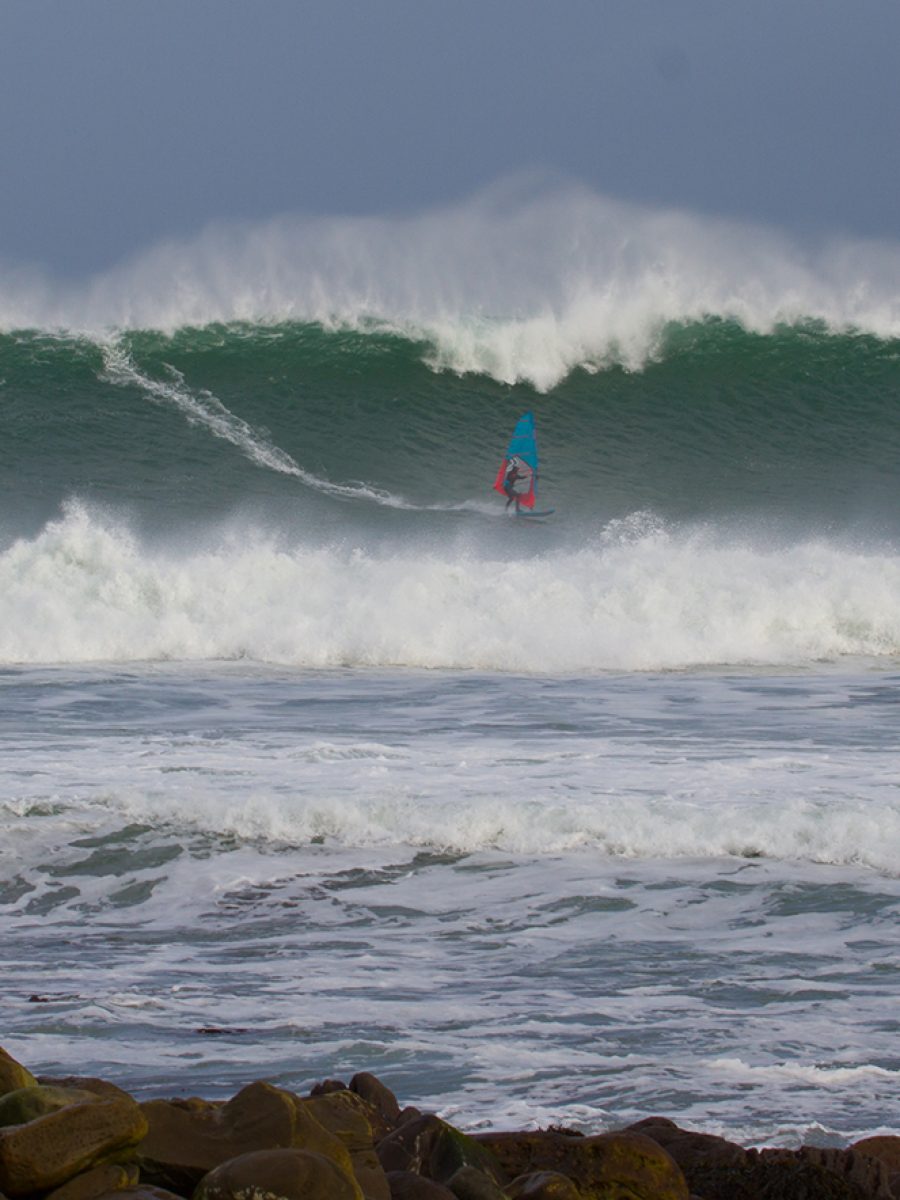
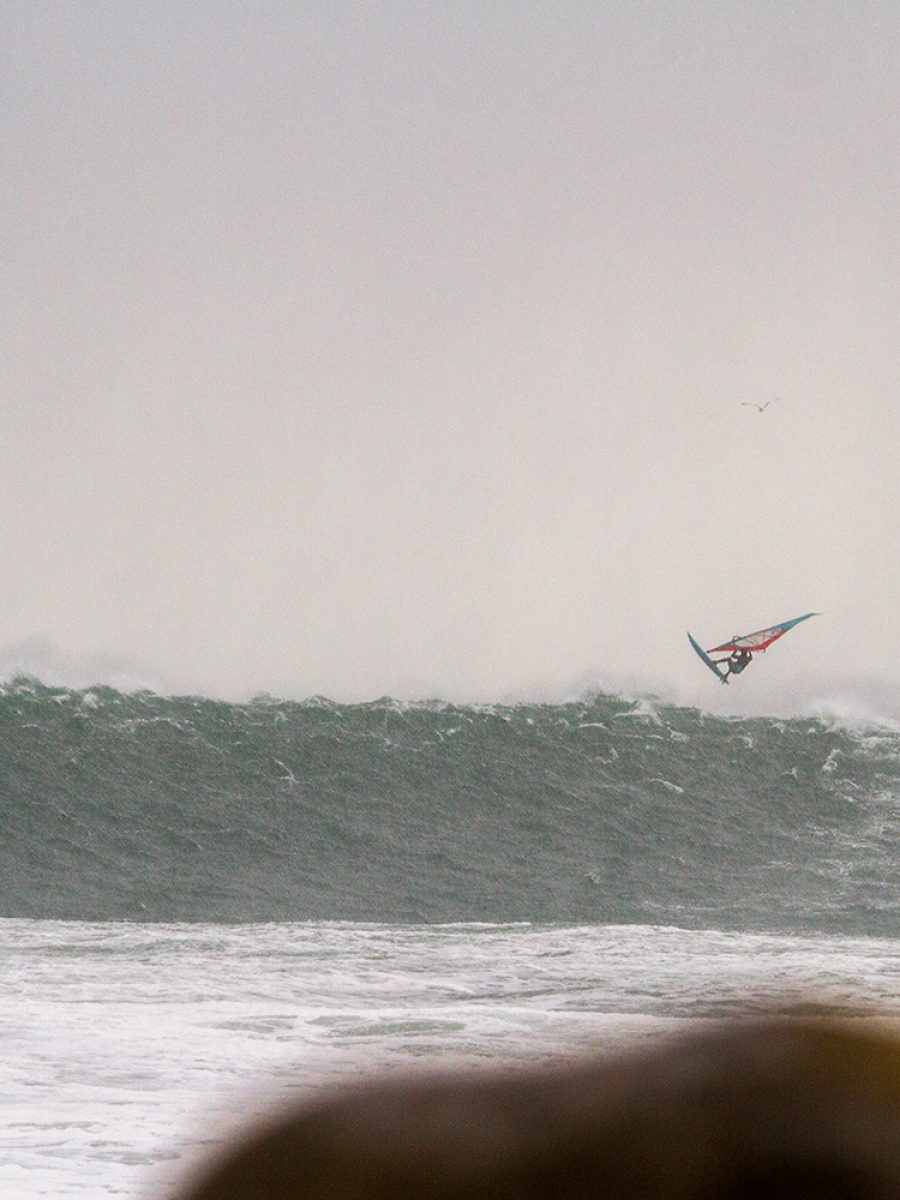
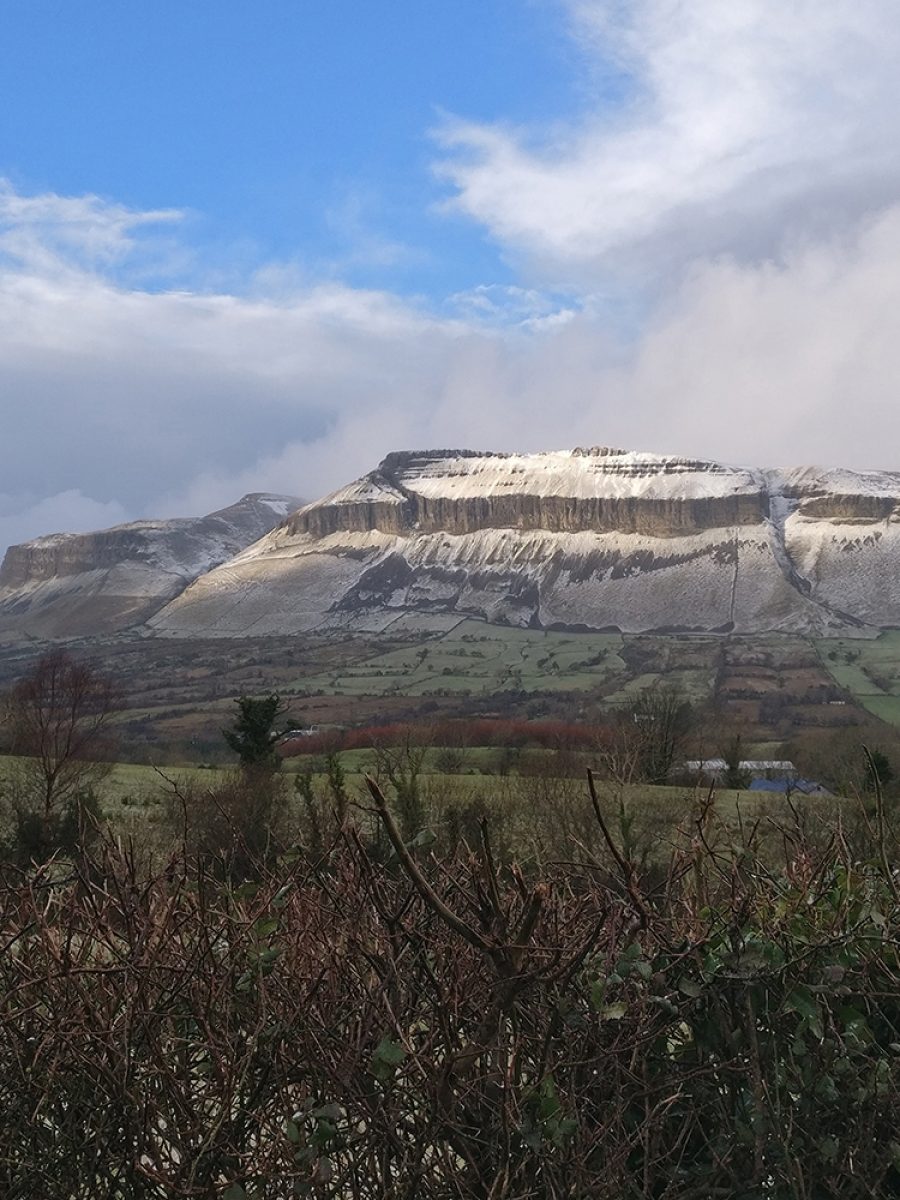
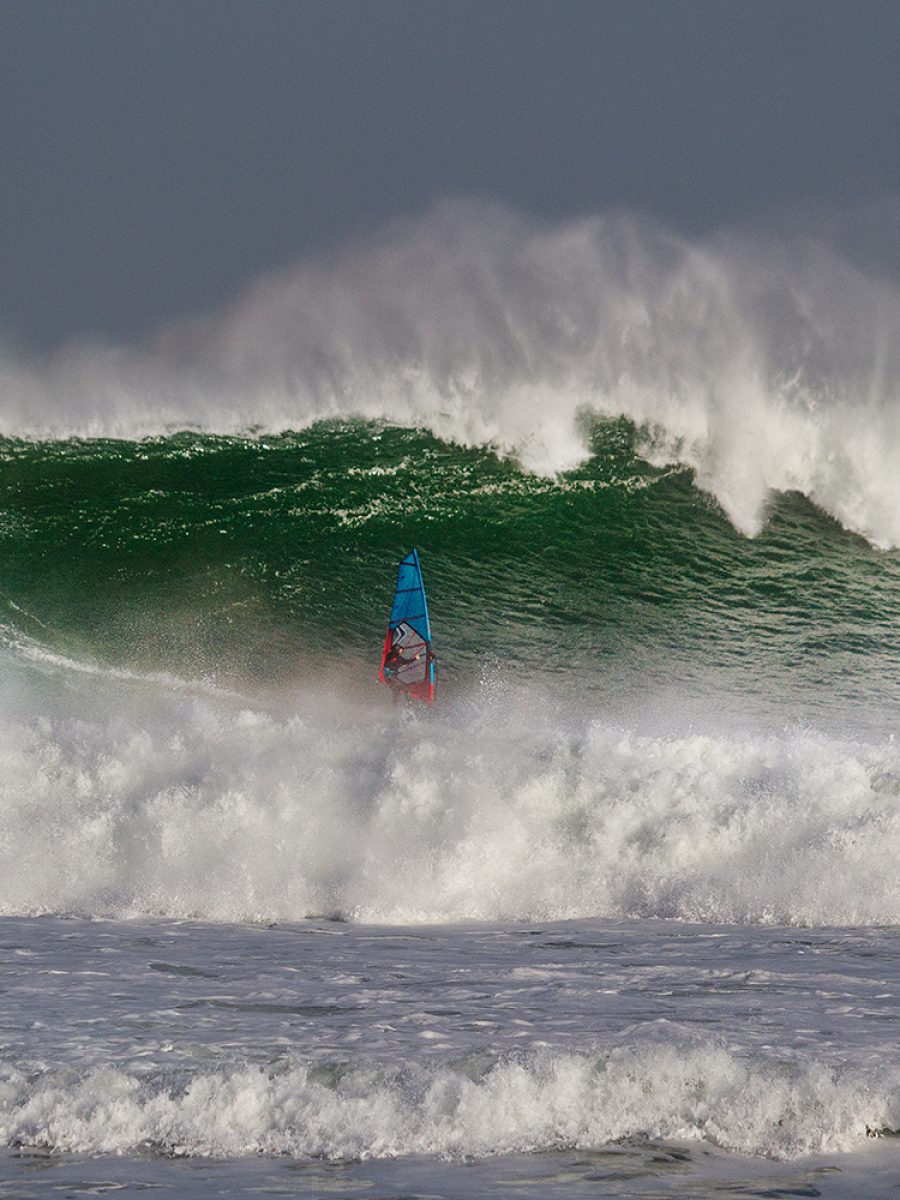

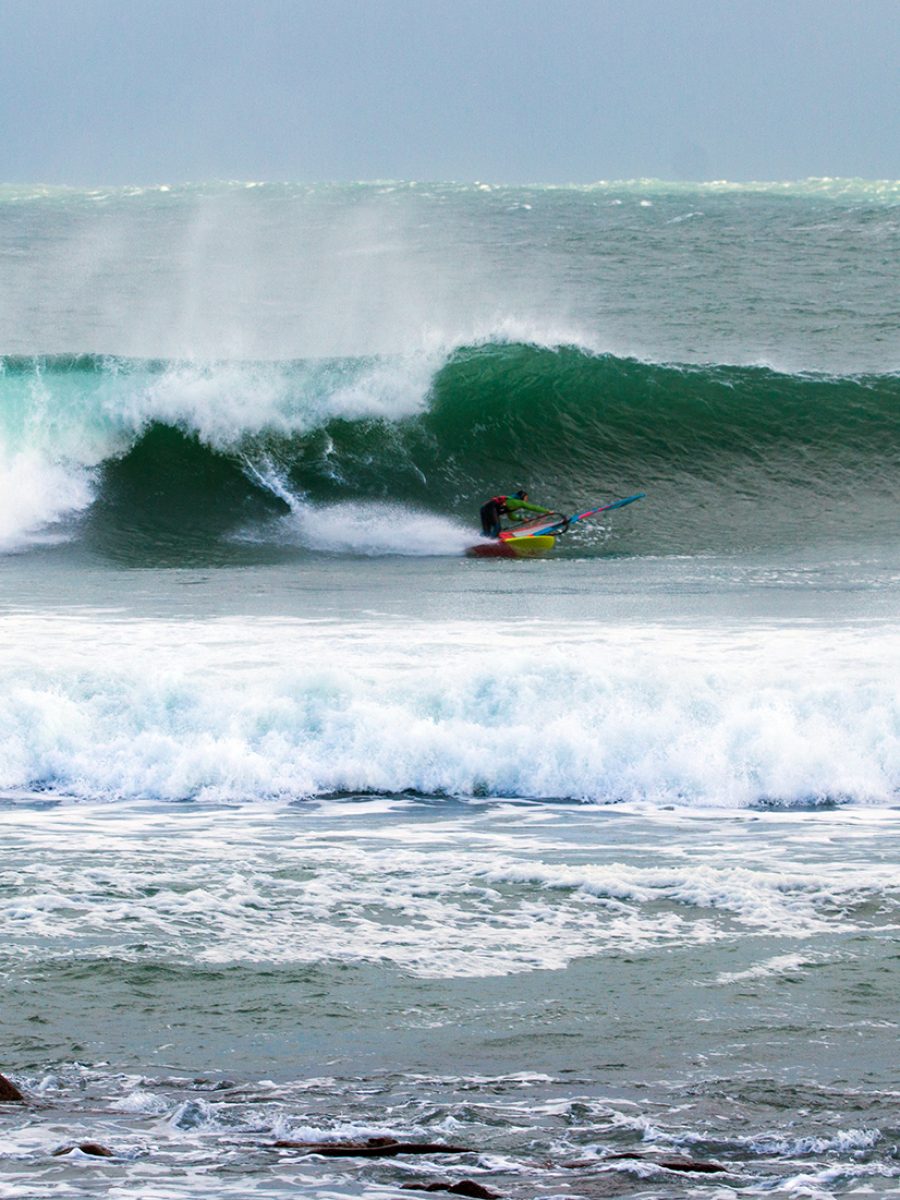

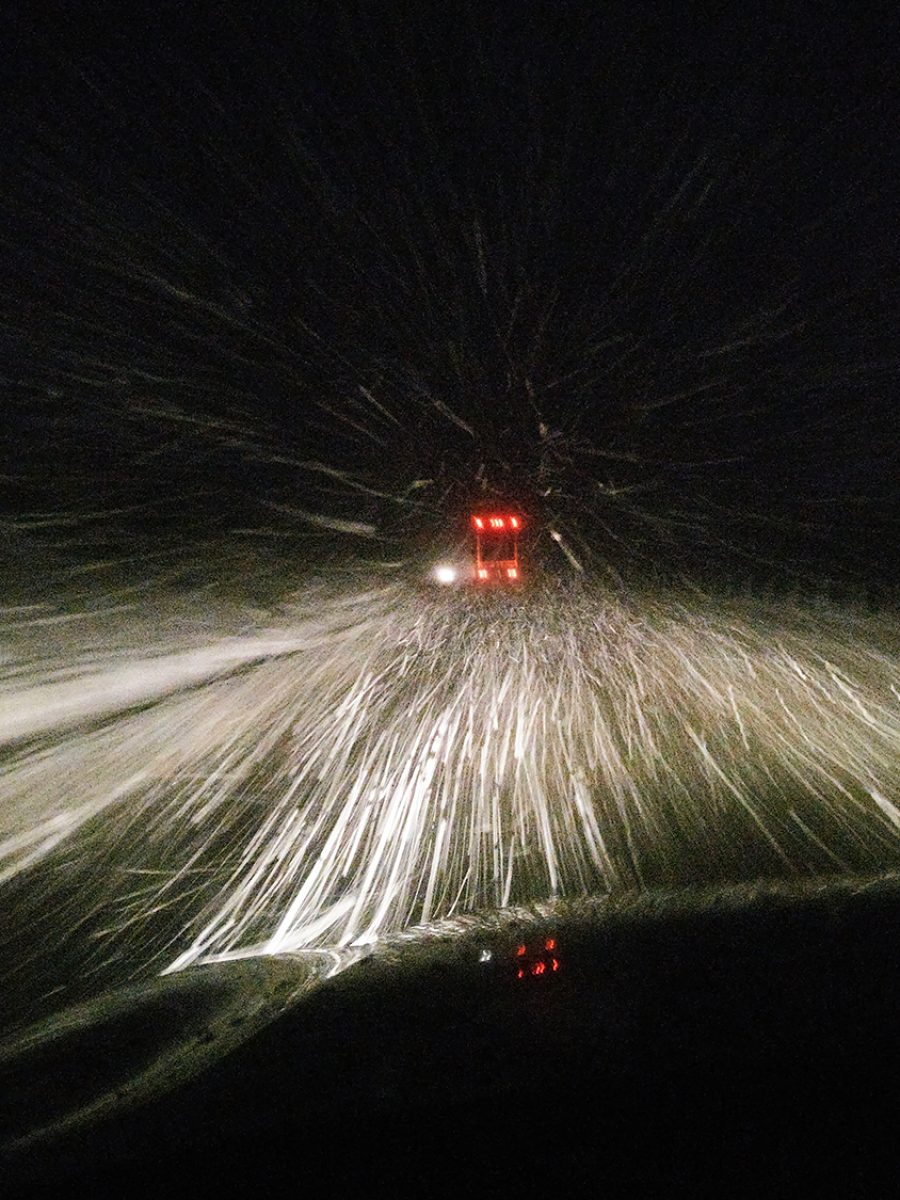
The post STORM FIONN – ZERO HOUR appeared first on Windsurf Magazine.